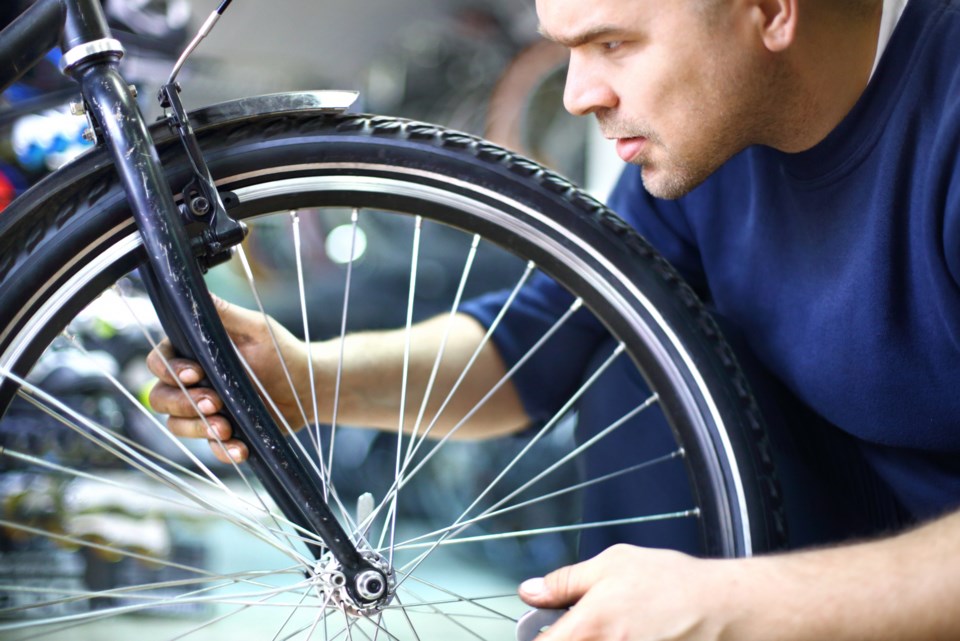This may come as a surprise to you, but most people who ride bikes in Whistler didn’t grow up with the best bikes and the best trails to ride them on. Like many of you, my first new bike as a kid was a box-store special: heavy, clunky and most likely built in the back of an Australian Kmart without a drop of grease applied to it. But I didn’t care about the backstory of my shiny Fiero Roadmaster. It was new, and it was mine.
But the love affair didn’t last, of course. After climbing one too many hills and hopping one too many curbs, the Roadmaster was running a little rough. My father had taught me how to fix a flat but had never worked on derailleurs before. So my mom and I threw the Fiero in the back of the station wagon and drove to the local bike shop. The grumpy shopkeeper reluctantly agreed to repair it, all the while trying to sell my mom on upgrading me to one of the more reputable bicycle brands he carried in his store. Predictably, my Fiero Roadmaster would have to do for the time being.
It wasn’t until I scrimped and saved, working a paper route and chores for small change, that I was able to buy my first real mountain bike. My fully rigid Wheeler 5500 Comp Line came with a chromoly steel frame, cantilever brakes and Shimano Rapidfire shifters (suspension came later when it was in the budget). That bike lasted for years and was the first I ever raced on. It took some hits, it got fixed up and I kept on riding.
Over the years, mountain biking has—by its very nature—weeded out a lot of inferior bike products that simply could not stand up to the abuse. That’s the reason that if you want to get started riding trails, an aging $400 steel hardtail will outperform a brand new $280 full suspension Supercycle from Canadian Tire, every time, without fail.
But the cycling industry is a whole lot bigger than mountain bikes. Lower-income families all over the world rely on affordable bikes for basic transport and accessible recreation. The problem is that many affordable bikes are so poorly built that they end up in landfills before they can contribute anything net-positive to society.
A group of non-profit bike shop mechanics is petitioning to change that. A Jan. 11 article in Bicycle Retailer and Industry News reported that their petition calls on manufacturers to “stop producing and selling bikes that fall apart after a few months of use. These products are harmful to the environment, erode public confidence in the usefulness and joy of bicycles, and waste the money of the mostly poor and working-class people who buy them.” The culprit is an influx of seemingly disposable bikes; frames fabricated with sloppy welds and flimsy rear dropouts, unfixable parts such as riveted chainrings and plastic (where metal should be) on critical parts such as derailleurs and brake levers.
At first glance, maybe not too far from the old Fiero, but veteran mechanics attest that even for the box-store bikes, they don’t make them like they used to.
“If I get a Huffy from the ’90s, chances are I can actually make repairs to it. It will still be heavy, but the steel will hold together,” Mac Liman, a 19-year mechanic of Denver’s Bike Together shop, told Bicycle Retailer. She noted that on more contemporary low-cost bikes—such as those purchased from box stores or online retailers such as Amazon—threads often shear off when components need to be adjusted or replaced. The frames crack easily and use non-standard parts that can’t be affordably replaced, she said.
Many believe that consumers should simply vote out these inferior bike products with their purchasing decisions, an if-it’s-shit-don’t-buy-it philosophy. That works for those of us who can visually tell the difference between an acceptable level of quality and disposable junk. But put yourself in the shoes of a low-income parent who’s saving up to buy bikes for themselves and their kids—someone who must shop according to the price point. In the eyes of the non-profit bike shops, selling these cheaply made bikes is predatory behaviour. Take, for example, the surge of low-cost bikes at the onset of the pandemic.
“Wal-Mart sold out of all its bikes in March 2020, and we’re already starting to get those bikes come in. And we can’t fix them,” said Liman.
Planned obsolescence is already rife in the consumer electronics industry, generating an unconscionable amount of waste from devices designed to crap out after two years (or less) of use. The technology of bikes (with the exception of e-bikes) hasn’t really changed much in the last century, especially at the entry-level tier of products. Telling low-income parents not to buy a cheap bike is like telling a gen-Zer not to own a smartphone. The initiative must come from the manufacturers, and it needs to come soon.
The petition calls on manufacturers and retailers to “set a minimum durability standard for bicycles to last at least 500 riding hours before breaking down; design bikes to be serviceable and hold adjustment, with replaceable and upgradable components; and stop creating and selling bikes that are made to fall apart.”
The world needs more bikes. But the world does not need more shit bikes. Let’s make the industry take notice.
Vince Shuley signed the petition, which you can find here. For questions, comments or suggestions for The Outsider email [email protected] or Instagram @whis_vince.




